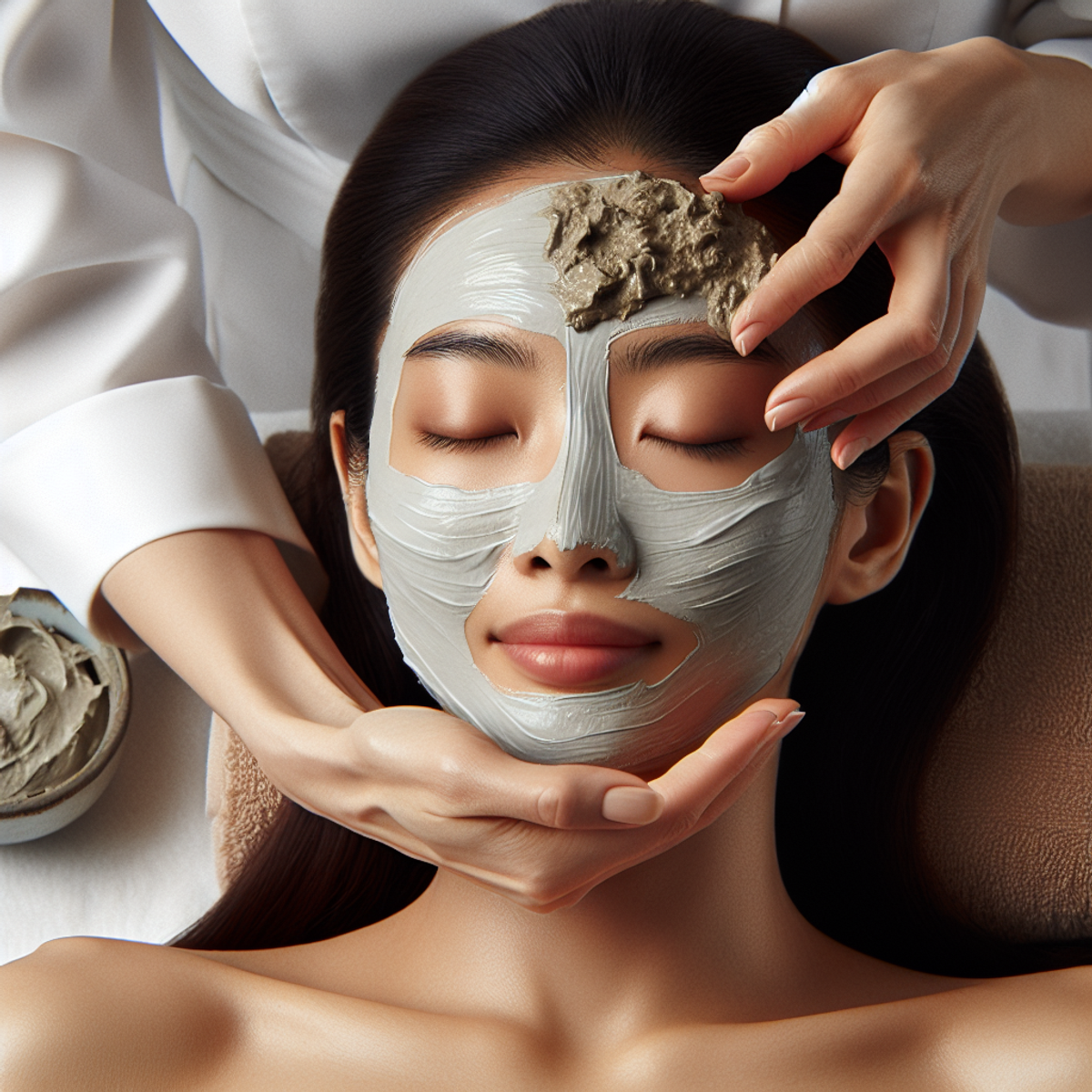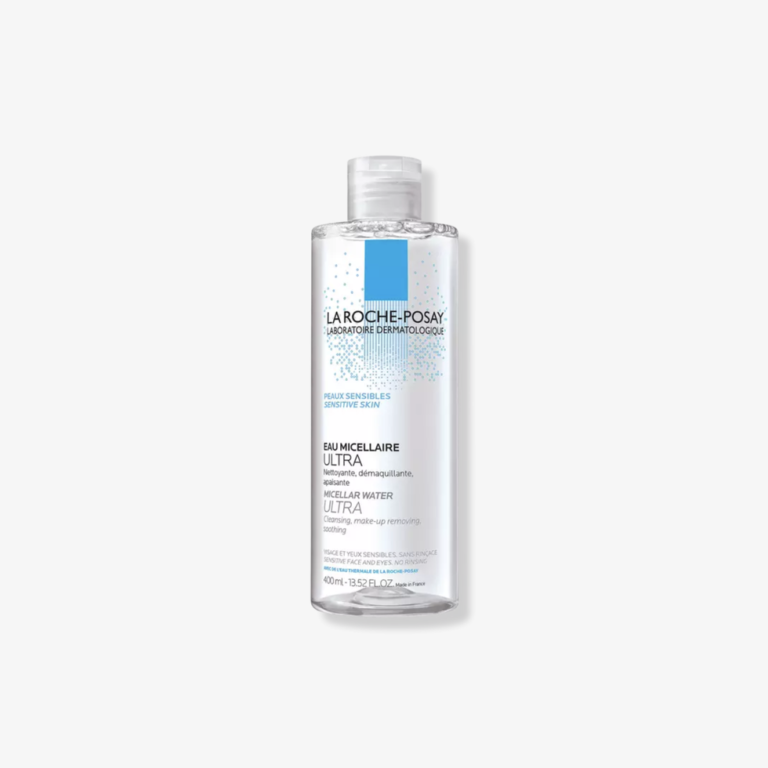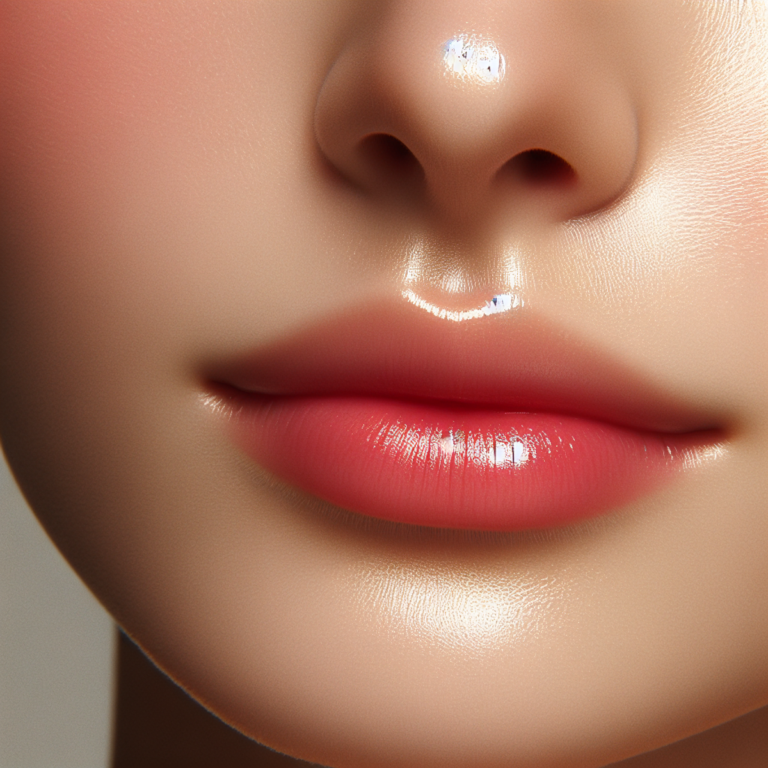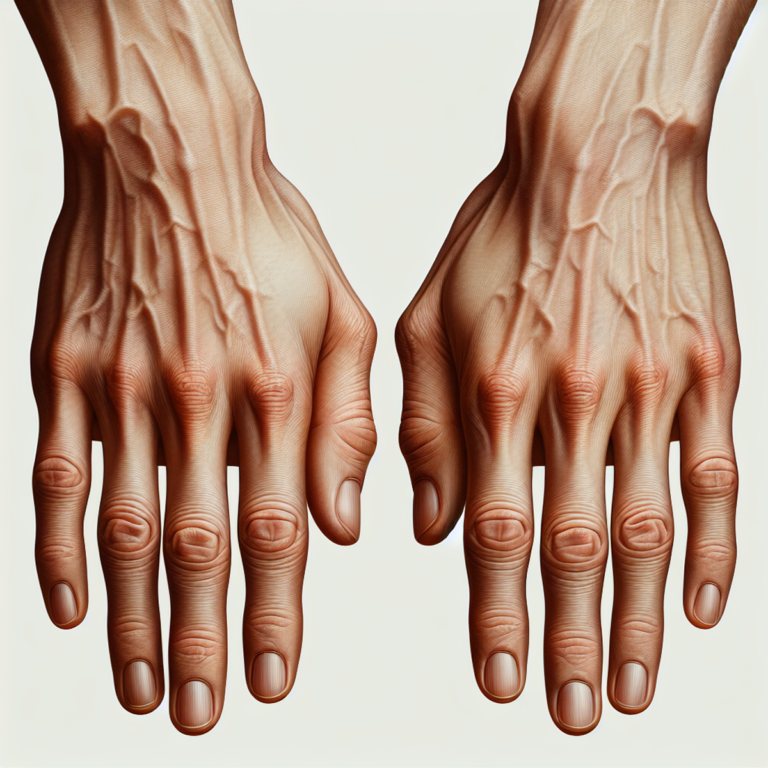Facials & Skincare Treatments

Introduction
Facials and skincare treatments are essential practices for maintaining healthy and radiant skin. These noninvasive treatments encompass a range of techniques aimed at addressing various skin concerns and promoting overall skin health. From cleansing and exfoliation to specialized methods like microdermabrasion and LED light therapy, these treatments offer a versatile approach to achieving vibrant and youthful skin.
The popularity of noninvasive skin treatments has been steadily growing, with more people opting for these gentle yet effective procedures to enhance their skin’s appearance. The appeal of noninvasive treatments lies in their ability to deliver noticeable results without the need for surgical intervention or extended downtime. As a result, individuals increasingly view facials and skincare treatments as preferred choices for revitalizing their skin.
By exploring the diverse array of facials and skincare treatments available, individuals can discover personalized solutions tailored to their unique skin needs. Whether it’s targeting specific concerns like acne or fine lines, or simply maintaining healthy skin, these treatments offer a holistic approach to skincare that resonates with an ever-widening audience seeking natural and sustainable beauty solutions.
The Different Types of Facials
When it comes to facials, there are many options available to address different skin concerns and goals. Each type of facial has its own benefits, techniques, and products that target specific issues. Here are some popular types of facials:
1. Deep Cleansing Facial
- This classic facial focuses on deeply cleansing and purifying the skin.
- It includes steaming, exfoliation, manual extractions, and a customized mask to remove impurities and unclog pores.
- Suitable for all skin types, especially those with congested or acne-prone skin.
2. Hydrating Facial
- A hydrating facial is meant to replenish moisture in dry or dehydrated skin.
- It usually involves gentle exfoliation to get rid of dead skin cells, followed by applying hydrating serums and a nourishing mask.
- This facial leaves the skin feeling plump, smooth, and moisturized.
3. Anti-Aging Facial
- An anti-aging facial targets signs of aging like fine lines, wrinkles, and loss of elasticity.
- It often includes treatments such as microdermabrasion or chemical peels to encourage cell turnover and stimulate collagen production.
- Using specialized anti-aging products and techniques helps improve the appearance of the skin and reduce visible signs of aging.
4. Brightening Facial
- A brightening facial aims to even out skin tone, reduce hyperpigmentation, and enhance radiance.
- It may involve using ingredients like vitamin C or kojic acid to lighten dark spots and promote a more glowing complexion.
- This type of facial is beneficial for those with dull or uneven skin tone.
5. Acne-Fighting Facial
- As the name suggests, an acne-fighting facial is specifically tailored for those dealing with acne and breakouts.
- It usually includes deep cleansing, exfoliation, and extractions to unclog pores and remove impurities.
- Anti-inflammatory ingredients are used to calm the skin and prevent future breakouts.
6. Sensitive Skin Facial
- A sensitive skin facial is gentle and soothing, designed to calm and strengthen sensitive or reactive skin.
- It involves using gentle products with minimal fragrances or harsh ingredients.
- This type of facial aims to reduce redness, inflammation, and discomfort.
7. Oxygen Facial
- An oxygen facial delivers oxygen to the skin through a machine that sprays a pressurized stream of oxygen and specialized serums.
- It helps improve circulation, promote collagen production, and rejuvenate the skin.
- This type of facial is suitable for all skin types and provides instant hydration and a healthy glow.
According to this source, regular facials are essential for maintaining healthy-looking skin. Depending on your specific needs, it’s generally recommended to get a facial every 4-6 weeks to align with the natural cycle of your skin. By incorporating facials into your skincare routine, you can enhance the overall health and appearance of your skin. Skincare professionals can customize facials based on individual needs and concerns so consulting with a specialist or esthetician will help you determine which type of facial is best suited for
Dermatologists vs. Spas: Who Should You Trust With Your Skin?
When it comes to skincare treatments, you have a choice between visiting a dermatologist or going to a spa. Both options offer facial treatments and promise to improve the health and appearance of your skin. However, there are some important factors to consider when deciding who to trust with your skin. Let’s explore the key differences between dermatologists and spas for skincare treatments.
Expertise and Qualifications
Dermatologists are medical doctors who specialize in treating conditions related to the skin, hair, and nails. They undergo extensive education and training, which includes medical school and residency programs focused on dermatology. This expertise allows them to accurately diagnose skin issues and provide effective treatment options.
On the other hand, spas employ estheticians who are trained in skincare treatments but do not have the same level of medical training as dermatologists. Estheticians often complete cosmetology programs or esthetics courses that focus on skincare techniques and procedures. While they can offer valuable advice and perform certain treatments, their scope of practice is limited compared to dermatologists.
Medical Conditions and Complex Skin Issues
If you have a specific skin condition such as acne, rosacea, eczema, or psoriasis, it is best to consult a dermatologist. These medical professionals have the knowledge and experience to diagnose and treat complex skin issues that require specialized care. They can prescribe medications, recommend lifestyle changes, and provide targeted treatments tailored to your unique needs.
Spas may not have the expertise or resources to deal with complex medical conditions. Their focus is often on providing relaxing and rejuvenating experiences rather than treating underlying skin conditions. While some estheticians may be knowledgeable about skincare products and basic treatments, they may not have the necessary qualifications to address more serious concerns.
Safety and Regulation
Dermatologists operate under strict regulations and guidelines set by medical boards and professional organizations. This ensures that they adhere to high standards of practice and prioritize patient safety. They have access to advanced medical-grade equipment and treatments, which are often more effective than those available at spas.
Spas may not be subject to the same level of regulation as dermatologists. While many spas strive to maintain a high standard of care, there is no guarantee that all estheticians or facilities follow best practices or use safe products. It is important to research and choose reputable spas that prioritize hygiene, use quality skincare products, and employ well-trained estheticians.
Customization and Personalization
One advantage of visiting a dermatologist for skincare treatments is the ability to receive personalized care based on your specific skin concerns. Dermatologists can evaluate your skin type, assess any underlying conditions, and recommend tailored treatment plans. They have access to a wide range of medical-grade products and procedures that can address your unique needs effectively.
Spas also offer customized facials and skincare treatments, but they may not have the same level of customization as dermatologists. Estheticians typically rely on a limited selection of skincare products and techniques, which may not be suitable for everyone. While spas can provide relaxing experiences and improve the appearance of your skin in the short term, they may not have the expertise or resources to address long-term skin health.
Cost Considerations
Cost is often a factor when deciding between dermatologists and spas for skincare treatments. Dermatologists generally charge higher fees due to their specialized training, expertise, and access to advanced treatments. However, their services are often covered by insurance if you have a diagnosed medical condition.
Spas tend to offer a wider range of price points, making them more accessible for individuals seeking occasional pampering or basic skincare maintenance. Keep in mind that while spa treatments may seem more affordable upfront, they may not provide the same long-term benefits or efficacy as dermatological treatments for specific skin concerns.
Choosing between a dermatologist and a spa for skincare treatments ultimately depends on your individual needs and preferences. If you have a medical condition, complex skin issues, or are looking for targeted and personalized care, a dermatologist is the best choice. However, if you are seeking relaxation, basic skincare maintenance, or non-medical treatments, a spa can provide enjoyable experiences.
Remember to prioritize your skin’s health and seek professional advice when needed. Regularly consulting with a dermatologist and following their recommendations can help you maintain the health and vitality of your skin in the long run.
Enhancing Your Skincare Routine: Tips for Healthy, Youthful-Looking Skin
Skincare routine is essential for maintaining youthful skin appearance and overall skin health. Here are some tips to help you enhance your skincare routine:
1. Daily Cleansing
- Use a gentle cleanser suitable for your skin type to remove dirt, oil, and impurities without stripping away natural oils.
2. Moisturize Regularly
- Hydrate your skin with a moisturizer that contains ingredients like hyaluronic acid or glycerin to maintain skin’s moisture barrier.
3. Sun Protection
- Apply broad-spectrum sunscreen with at least SPF 30 every day, even on cloudy days, to protect against harmful UV rays that contribute to premature aging.
4. Healthy Diet and Hydration
- Consume a balanced diet rich in antioxidants, vitamins, and minerals. Drink plenty of water to keep your skin hydrated from within.
5. Exfoliation
- Incorporate a gentle exfoliant into your routine to remove dead skin cells and promote cell turnover for a brighter complexion.
6. Regular Facials
- Schedule regular facials every 4-6 weeks to align with the skin’s natural cycle and address specific concerns under professional guidance.
7. Quality Sleep
- Prioritize quality sleep as it allows the skin to repair and rejuvenate itself, contributing to a youthful appearance.
Remember, consistency is key when it comes to skincare routines. By adopting these practices, you can maintain healthy, youthful-looking skin in the long run.
Other Popular Skincare Treatments to Consider
When it comes to skincare treatments, facials are just the tip of the iceberg. There are a variety of specific skincare treatments available that can address different skin concerns and help you achieve your desired results. From reducing wrinkles to improving skin texture, here are some popular treatments worth considering:
- Botox: Botox injections are a common choice for those looking to reduce the appearance of wrinkles and fine lines. This treatment involves injecting a purified form of botulinum toxin into specific muscles, which temporarily relaxes them and smooths out the overlying skin. Botox is particularly effective for treating forehead lines, crow’s feet, and frown lines between the eyebrows.
- Dermal Fillers: Dermal fillers are used to restore volume and plumpness to areas that have lost elasticity over time. These injectable gels contain hyaluronic acid, which attracts and retains moisture in the skin, resulting in a more youthful appearance. Dermal fillers can be used to soften nasolabial folds (smile lines), enhance the lips, and contour the cheeks.
- Chemical Peels: Chemical peels involve applying a chemical solution to the skin, which exfoliates the outer layer and stimulates cell turnover. This treatment can improve skin texture, minimize acne scars, reduce hyperpigmentation, and even out skin tone. Chemical peels can range from mild (superficial peels) to more intense (deep peels), depending on your specific needs.
- Microdermabrasion: Microdermabrasion is a non-invasive exfoliating treatment that uses tiny crystals or a diamond-tipped wand to remove dead skin cells and reveal smoother, brighter skin underneath. It can help minimize fine lines, improve acne scars, and enhance overall skin texture. Microdermabrasion is gentle and suitable for most skin types.
- Laser Resurfacing: Laser resurfacing treatments use laser technology to stimulate collagen production, reduce wrinkles, and improve skin texture. By targeting specific layers of the skin, lasers can also help fade acne scars, sun damage spots, and hyperpigmentation. Fractional laser resurfacing is a popular option as it delivers precise results with minimal downtime.
- Laser Skin Rejuvenation: Laser skin rejuvenation treatments utilize laser energy to target specific skin concerns such as redness, uneven skin tone, and enlarged pores. These treatments can help improve overall skin texture and promote a more youthful appearance by stimulating collagen production.
- Acne Blue Light Therapy: Acne blue light therapy is a non-invasive treatment that uses blue light to kill acne-causing bacteria on the skin. This therapy can effectively reduce inflammatory acne lesions and prevent future breakouts without the need for medication or harsh topical treatments.
- Intense Pulsed Light (IPL™) Therapy: IPL™ therapy is a versatile treatment that uses broad-spectrum light to target various skin concerns such as sun damage, hyperpigmentation, and spider veins. It stimulates collagen production and can be used on the face, neck, hands, and other areas of the body.
- Thermage: Thermage is a non-exfoliating treatment that uses radiofrequency energy to tighten loose or sagging skin on the face and neck. It stimulates collagen production and improves overall skin tone without damaging the surface layers of the skin.
Each of these skincare treatments offers unique benefits and targets different aspects of your skin concerns. It’s essential to consult with a qualified skincare professional or dermatologist to determine which treatment is best suited for your specific needs. They can assess your skin condition, discuss your goals, and recommend the most appropriate course of action.
Remember, while these treatments can provide visible improvements, they should be seen as part of a comprehensive skincare routine that includes daily cleansing, moisturizing, and sun protection. Prioritizing self-care and seeking professional advice when needed will go a long way in maintaining your skin’s health and vitality in the long run.
Understanding the Effectiveness of Facials and Skincare Treatments
When it comes to facials and skincare treatments, it’s important to understand how effective they can be. This knowledge will help you make better choices for your skin health. While these treatments can offer immediate improvements in how your skin looks and feels, their long-term results may differ depending on your specific needs and the skills of the person performing them.
Here are some key factors to consider when assessing the effectiveness of facials and skincare treatments:
- Skin Concerns: Different facials and skincare treatments address specific skin issues. For instance, if you have acne-prone skin, a facial with thorough cleansing and exfoliation might help reduce breakouts. On the other hand, if you’re worried about signs of aging, a facial containing anti-aging ingredients and methods like microcurrent therapy or LED light therapy could be more beneficial. It’s crucial to select treatments that target your particular skin concerns for the best outcomes.
- Provider Expertise: The expertise and qualifications of the skincare professional or dermatologist performing the treatment play a significant role in its effectiveness. Dermatologists undergo extensive training and have in-depth knowledge of various skin conditions, making them better equipped to address complex skin issues. When seeking facials or skincare treatments, it’s essential to choose a reputable provider who has experience in treating your specific concerns.
- Consistency: Consistency is key when it comes to achieving long-term results from facials and skincare treatments. While one session can provide temporary improvements, regular treatments over time can lead to more noticeable and lasting changes in your skin. Depending on your needs, professionals often recommend scheduling facials every 4-6 weeks to align with the skin’s natural cycle of cell turnover.
- Complementary Skincare Routine: Facials and skincare treatments work best when combined with a consistent at-home skincare routine. Your daily regimen should include cleansing, moisturizing, exfoliating (if recommended), and sun protection. Using skincare products that are tailored to your skin type and concerns can help enhance the effects of professional treatments and maintain healthy, youthful-looking skin in between sessions.
- Individual Variations: It’s important to recognize that everyone’s skin is unique, and individual responses to facials and skincare treatments can vary. Factors such as genetics, lifestyle choices, and environmental factors can influence how your skin responds to different treatments. It may require some trial and error to find the right combination of treatments that work best for you.
- Scientific Evidence: While many facials and skincare treatments have anecdotal evidence supporting their effectiveness, it’s crucial to consider scientific studies and research when evaluating their claims. Look for treatments backed by peer-reviewed studies or those recommended by trusted dermatological associations, like this study on skincare treatment efficacy. Scientific evidence can provide a more objective assessment of a treatment’s efficacy.
- Realistic Expectations: Setting realistic expectations is essential when undergoing facials and skincare treatments. While these treatments can provide significant improvements in your skin’s appearance,
In Conclusion
Prioritizing self-care and seeking professional advice are essential for maintaining the health and vitality of your skin in the long run. Facials and skincare treatments can play a significant role in achieving healthy, youthful-looking skin, but it’s important to approach them with realistic expectations and understanding.
Here are the key takeaways to consider:
- Know your skin: Understand your skin type and specific concerns before choosing a facial or skincare treatment. This will help you select the most appropriate treatment and maximize its benefits.
- Seek professional advice: Consult with a dermatologist or skincare specialist to determine the best course of action for your skin concerns. They can provide personalized recommendations and guidance based on their expertise.
- Regular maintenance: Consistency is key when it comes to skincare. Incorporate daily cleansing, moisturizing, and sun protection into your routine to maintain healthy skin between treatments.
- Educate yourself: Stay informed about the latest advancements in skincare treatments and products. Research reputable sources, read reviews, and ask for recommendations from trusted professionals to make well-informed decisions.
- Combine treatments: Consider combining different skincare treatments to address multiple concerns effectively. For example, combining microdermabrasion with a chemical peel can provide both exfoliation and deep pore cleansing.
- Lifestyle factors: Remember that skincare is not just about external treatments; it also involves internal factors such as diet, hydration, stress management, and sleep quality. Adopting a holistic approach will contribute to overall skin health.
- Long-term commitment: Achieving optimal results requires consistency and patience. Don’t expect immediate miracles; instead, focus on maintaining a long-term skincare routine that includes regular facials or treatments.
- Self-care mindset: Treat skincare as an act of self-care rather than a chore. Take time for yourself, relax during facials, and enjoy the process of nurturing your skin. It’s an investment in your well-being and confidence.
Remember, while facials and skincare treatments can provide immediate improvements in skin appearance and relaxation benefits, their long-term efficacy may vary based on individual needs and the expertise of the provider. By prioritizing self-care, seeking professional advice, and adopting a holistic approach to skincare, you can ensure the health and vitality of your skin for years to come.
So go ahead, pamper yourself with a rejuvenating facial or skincare treatment, and embrace the journey towards healthy, glowing skin!
Note: The information provided in this article is for educational purposes only and should not be considered medical advice. Please consult with a dermatologist or skincare professional for personalized recommendations based on your specific needs.










